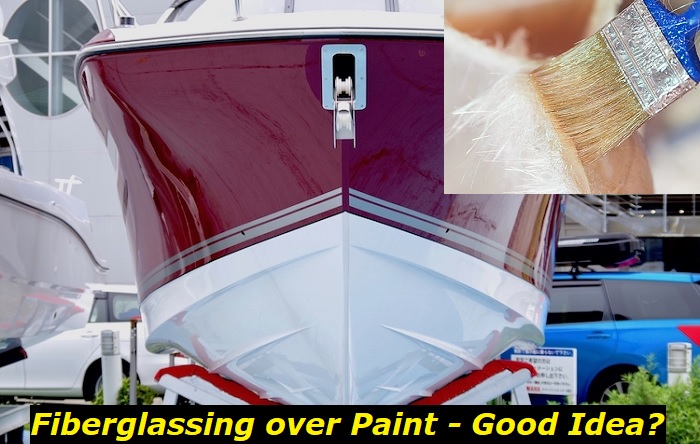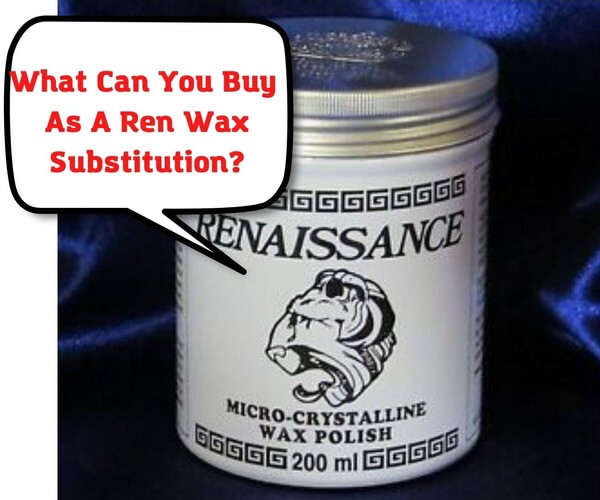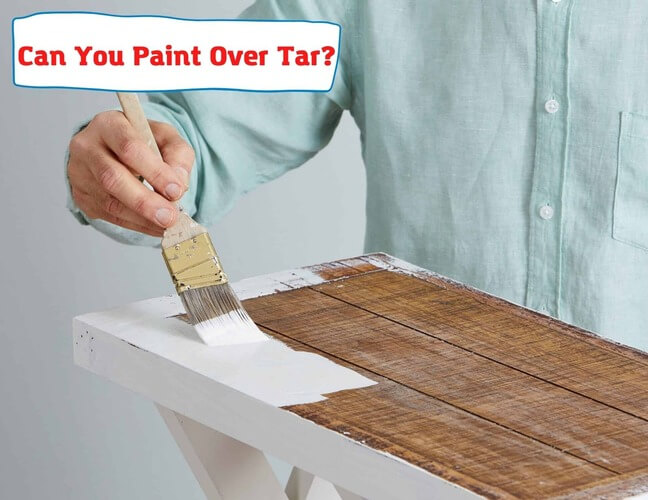It’s a common misconception that you can easily apply fiberglass over existing paint. This is not advisable, especially in projects such as restoring an old boat where the hull has been previously painted. Applying fiberglass directly over paint without extensive preparation is a recipe for failure.
The allure of fiberglass lies in its ability to create a smooth, crack-free surface. However, the chemical incompatibility between the paint (usually made from acrylics and polyurethane resins) and the fiberglass (composed of glass fibers and epoxy resin) means that adhesion will be weak and the integrity of the fiberglass layer will be compromised over time.

It’s a routine practice for many to sand down the painted surface to the primer before applying fiberglass. Some DIY enthusiasts might use fiberglass to fill in nail holes over painted wood, not considering that wood and fiberglass have different curing times. This results in an uneven cure and potential adhesion problems.
For the best results when applying fiberglass, it’s essential to remove as much paint as possible. Paint can resist the bonding of resin, and a painted surface is challenging to sand to the smoothness required for a proper fiberglass finish.
Understanding Fiberglass
Fiberglass is a remarkably robust material constructed from woven glass fibers and is used in a variety of applications, including boats, vehicles, and building construction. It offers considerable strength and insulation while being lighter than traditional building materials like wood or metal, and it is impervious to fire and decay.
In the world of marine craft, fiberglass boats are renowned for their durability and their ability to withstand demanding aquatic environments.
The Process of Fiberglassing
Fiberglassing involves layering materials to create a reinforced surface. The process typically starts with an application of resin to the work area, followed by a mat or cloth which acts to bond the resin with the surface below. This combination is then cured with heat to solidify the bond.
For large-scale projects, a suspended matting system may be utilized for convenience and accessibility. In smaller applications, the mat adheres directly to the surface via the resin.
Dealing with Painted Surfaces in Repairs
When faced with a painted surface in need of fiberglass repair, the first step is to sand away as much of the paint as possible. For metal surfaces that have been exposed, such as a galvanized boat hull, an epoxy primer should be applied to foster a strong bond between the remaining paint and the new fiberglass layer.
By adhering to these guidelines, you can ensure a successful and durable application of fiberglass over surfaces that require repair or reinforcement.
Can You Glaze Fiberglass?
Glazing fiberglass, which involves adding a second layer of woven fiberglass fibers secured with resin, is possible but typically reserved for specific needs. While this process reinforces the material’s strength, it is irreversible once the resin cures. Imperfections in the application—areas with insufficient or uneven coverage—cannot be corrected after the fact.
One challenge of glazing is the complexity of the application. Applying by hand is arduous, while spray-gun application, offering a more uniform distribution, necessitates professional equipment and expertise.
Is Fiberglass Recoverable?
Fiberglass can be restored, especially if it has only been primed or glazed. However, the resin used in fiberglass has a finite lifespan and is known to degrade over 10 to 15 years, regardless of whether it’s used indoors or outdoors.
To prolong the life of the resin, it can be covered with a woven glass fabric, which shields the resin from air exposure, mitigating its deterioration.
Step-by-Step Guide to Applying Fiberglass
Applying fiberglass is straightforward with the right materials and preparation:
Materials Needed:
- Fiberglass cloth
- Polyester resin and hardener
- Mold for duplication
- Metal bowl
- Wax paper
- Wooden paint stick
- Sandpaper
Step One: Mold Preparation
For new fiberglass creations, construct a mold to shape the liquid resin. In repairs, such as on a boat or vehicle, tape off the area and apply resin directly.
Step Two: Prepare the Fiberglass Cloth
Cut the cloth to fit your mold with enough overlap at the edges for strength and durability.
Step Three: Mix Resin and Hardener
Pour the resin and hardener into a metal bowl. Mix thoroughly with a paint stick, reaching all container parts.
Step Four: Apply the Resin
Place the cloth onto the mold and spread the resin mixture over it, ensuring even coverage, especially at the edges and corners.
Step Five: Layer to Desired Thickness
Alternate the direction of each layer for robust construction, sanding in between to smooth any protrusions. After applying the final layer, allow it to dry fully.
Step Six: Finish with a Smooth Resin Coat
Apply a final resin coat for a smooth finish, then paint with polyurethane or alkyd enamel if desired.
Step Seven: Remove the Mold
If your mold was lined with wax paper or treated with a release agent, you should be able to separate the new fiberglass form easily.
While this guide outlines a basic method for fiberglass application, numerous other techniques exist, each requiring diligence and precision to ensure successful results.
Can You Apply Fiberglass Over Wood?
Yes, fiberglass can be applied over wood, provided that the wooden surface is in a sound state. Most boats are constructed with plywood that remains robust through their lifespan; otherwise, the vessel would likely have failed long before any repair attempts. However, if the wood is warped, the fiberglass mat may conform to this irregularity, resulting in an uneven surface once the resin cures.
To prepare for a successful fiberglass application, the wood should be sanded to a 100-grit finish. This creates an optimal surface for the resin to bond with. Since you cannot sand the wood after the fiberglass mat has been applied, it’s crucial to achieve a smooth surface beforehand.
Recommendations for Using Fiberglass
After proper preparation, painting, priming, and resin application, your boat will benefit from the increased durability that fiberglass offers. It becomes highly resistant to corrosion, abrasion, and impact, which explains its widespread use in boatbuilding. While there are certain challenges associated with fiberglass—like the difficulty of application and potential for errors—these can be mitigated by engaging professional services.
Conclusion
Fiberglass stands out as the material of choice for marine crafts, including boats and yachts, due to its resilience and ability to withstand frequent and vigorous use. Its utility extends to automotive repairs and home improvements, thanks to its reparability. Should complications arise, professional fiberglass technicians can provide on-the-spot remedies, ensuring your investment is protected and maintained at the highest standard.
- Can You Unmix Paint: Techniques, Consequences, Alternatives - February 23, 2024
- Does Primer Need to be Mixed? Effective Primer Application - February 22, 2024
- How to Make Old Paint Usable Again: Retrieving and Preserving Paint - February 21, 2024



